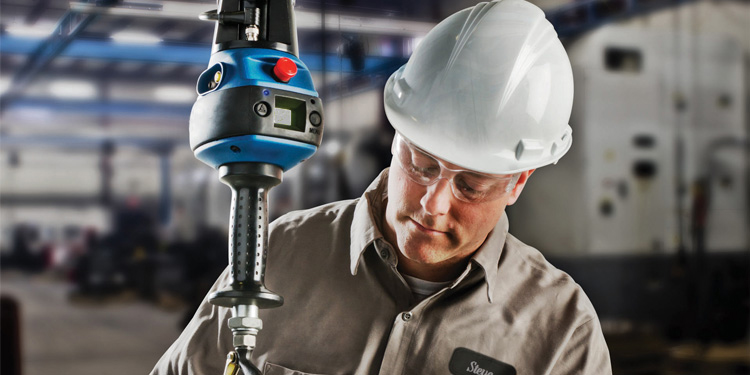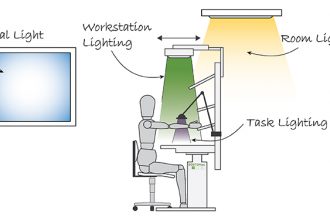Considering Intelligent Lifting Devices For A Manual Handling Application? Look For These Key Features

An intelligent lifting device (ILD) is a lift assist solution or load manipulation system that moves seamlessly and precisely with its human operator’s motion. Programmed to mimic the exact job being performed and acting as an extension of the body, ILDs enable fast, ergonomic, load manipulation while increasing a worker’s lifting ability. They are electric-powered, incorporate industrial processor-based controls, and often feature a “float mode” which allows precise, hand-on-part movement and placement of a load.
Traditional lifting devices, such as electric chain hoists or vacuum lifters, often lack the fine precision and high-speed benefits that an ILD can offer. For facilities with high-speed equipment and demanding, repetitive lifting and loading processes — including automated palletizing/depalletizing, order picking, loading parts into robotic work cells, loading welding work cells, removing cut parts from plasma or laser burn tables and other systems — an ILD can help enhance productivity, profitability, and safety.
ILDs are currently in use at many companies whose processes require both speed and precision in parts handling. This includes aerospace machining, defense manufacturing, aircraft engine assembly, automotive engine and transmission assembly, heavy equipment and locomotive manufacturing, and other applications.
When considering an ILD, look for the following features and functions that:
Enhance overall handling speed and productivity: A recent ergonomic lifting study compared tasks performed with an ILD against those performed by a traditional lifting solution, such as electric balancers, air balancers, variable frequency drive hoists, and manual labor. The findings showed that ILDs’ features and functions enabled user friendly, heavy load manipulation that contributed to a 70% increase in manufacturing speed and a 51% increase in productivity.
Minimize parts damage to boost profitability: In the same study, researchers found that the precise control of an ILD reduces the risk of damage to a heavy load by 3.3 times over other lifting methods. This leads to a reduction in costs accrued from damaged parts and scrap materials, increasing overall profitability.
Increase operator safety through improved ergonomics: ILDs support more ergonomic movement for the operator by reducing the risk of strains or sprains caused by reaching, bending, twisting, stretching, or lifting heavy items. Improving ergonomics in heavy load manipulation with an ILD can also eliminate repetitive motion injuries and reduce worker fatigue. This contributes to an overall safer work environment.
Looking for more ways to improve ergonomics in your manual material handling operation? Download the free publication, “Ergonomic Guidelines for Manual Material Handling,” published by the members of Ergonomic Assist Systems & Equipment (EASE).



